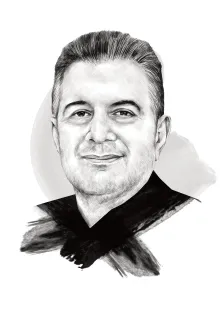The Federal Reserve's policy hit it hard in two major ways:
First, rising borrowing costs have had a disproportionate effect on some parts of the US economy, including tech companies which are typically more fragile in their early stages, and which were at the core of the collapsed bank's business.
SVB's deposits of $174 billion had fallen from $200 billion at the beginning of last year, with the bank catering to about half of the US tech sector — an industry faced with changing financial conditions and that had already been struggling. It also held funds for science-based companies dealing with climate issues, which also suffered some of the most serious damage.
Second, the increase in interest rates hit the value of Treasury bonds, which banks rely on as a major part of their capital holdings. As the value of Treasuries slumped, these government bonds on banks' balance sheets were worth much less.
Ranked in 16th place on the list of the largest US banks, SVB is the biggest to collapse since 2008. It lost 60% of its market value within hours, only one day after selling more than $20 billion's worth of assets due to a lack of liquidity.
The move hit confidence among account holders, who rushed to pull their deposits, withdrawing $42 billion in a single day.
An ominous sign
Since the end of last year, unrealised losses – from assets that have dropped in value but not yet been sold – reached $620 billion according to data from the Federal Deposit Insurance Corporation.
These losses are likely to rise if the Federal Reserve continues to raise interest rates.
This is an ominous sign that an anticipated global economic crash is approaching, and it further aggravates the pessimistic outlook since Russian President Vladimir Putin's invasion of Ukraine shook up the prospects of global economy.
Nonetheless, the clarity that follows a crash can turn it into a blessing in disguise.
Here are some of the lessons learned so far this time around:
First, the collapse of SVB reminds us once again that the banking and financial sector grows and prospers wherever there is trust. Once this trust is shaken, even the largest financial empires can come crashing down.
Second, in the era of social media, bank runs are faster. The panic and pressure of deposit withdrawal requests no longer takes days to build up. A few hours can be enough for the fire to spread across markets and continents.
It only takes a single trend to test the ability of those with oversight of banking systems to avoid worst-case scenarios before they occur. This applies to central banks, regulatory and supervisory institutions, ratings and auditing companies who must pre-assess risks and identify fragilities. Governance tends to have gaps.
Third, the response time to any banking crisis is vital and must be ultra-rapid. And it helps if comes from the highest level.




